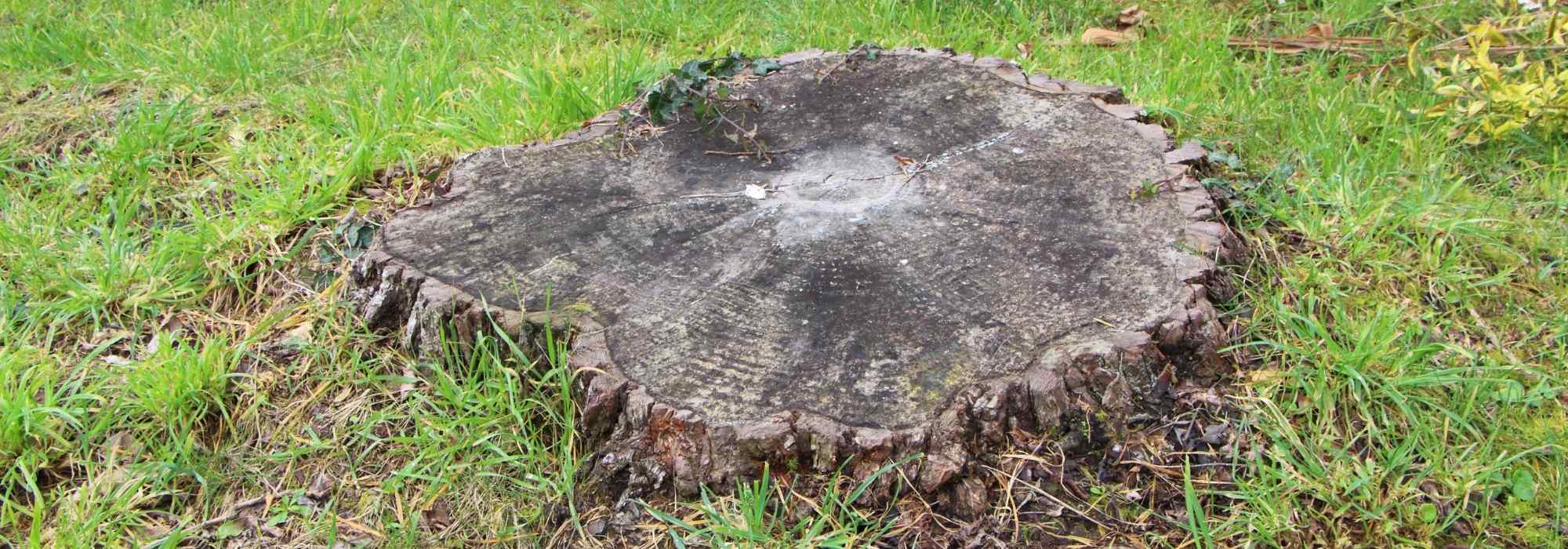
How to remove a tree stump?
Techniques and advice
Contents
After felling a tree, the stump can be inconvenient for maintenance or for the safety of an absent-minded gardener. Moreover, some species tend to produce numerous suckers from their roots and at the very base of the stump. Some people dislike the look of a stump in the middle of the lawn, while others find this natural touch very pleasing to the eye and welcoming for biodiversity.
Discover how to remove a tree stump and our tips for doing so without ruining your back or your wallet.
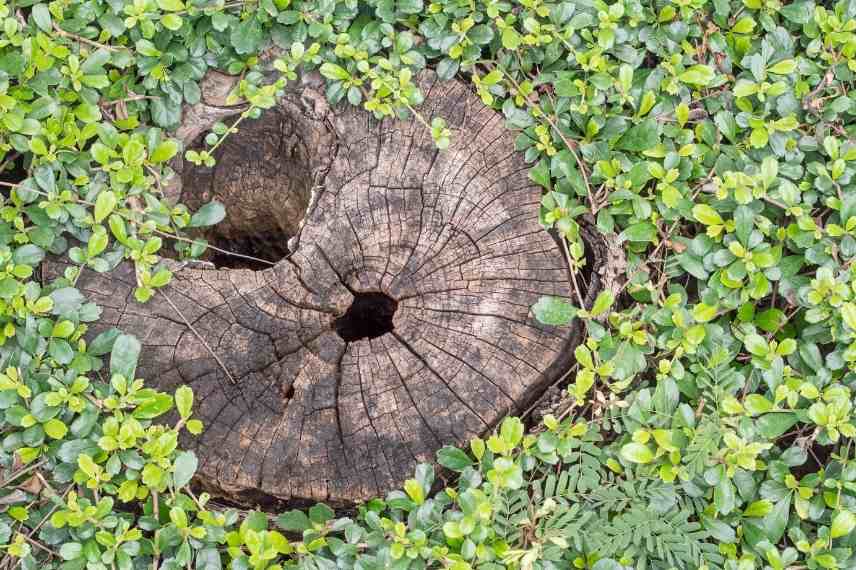
Manual stump removal
Manual method will only be feasible for stumps that have a running root system such as beech, cherry, spruce, pine, poplar, etc… This technique will also apply only to medium-sized trees and not to large specimens.
In case of a species with a taproot root system such as oak, you will need to rely on specialised machinery or a park and garden contractor.
It is possible to hire a stump grinder but this will cost several hundred euros per day. A digger, meanwhile, can cause serious damage to your soil because of the weight of such machinery.
In any case, removing a stump manually is greatly eased if you leave part of the trunk when felling so you can pull it after cutting the roots. If your stump is level with the soil, you will have to resort to mechanical stump removal by grinding or to chemical removal if necessary.
Which tools to uproot a tree?
- An axe or a chainsaw (for large roots)
- A reciprocating saw for hard-to-reach roots
- A pickaxe to clear soil around large roots where the spade cannot slip in
- A spade to dig a trench all around the stump
- A pair of gloves
- A hand winch for stubborn stumps
How to uproot a tree?
- Start by digging a trench all around the stump to a depth equivalent to a spade blade (remember to lay a tarp on your short grass meadow to collect soil more easily when backfilling and to avoid damaging your lawn).
- The roots must then be freed from the soil that surrounds them in order to be cut using a saw, an axe or a chainsaw. Choice of appropriate tool will depend both on size of the root and on ease of access with the tool.
- Once all roots have been cut around the perimeter of the first trench, continue digging by half to a full spade blade to ensure other main roots are not hidden in the subsoil. This first step is fairly tiring but will ensure success of the rest of the work.
- At this stage, either the stump will come away easily, or it will require a winch.
- In the second case, attach the winch to a tree with at least the same circumference as the stump to be extracted. Establish a safety perimeter around the tree and ensure no one enters it. This perimeter should be at least double the length of the winch cable connecting the two trees.
- Tighten the cable using the gearing until the stump tips over. Work slowly to avoid any accident. The loop attached to the stump should be angled downwards to avoid any accident.
The stump, once cleared of soil from its bark, can be repurposed as wood for heating or even used in a permaculture mound or a wood pile for beneficial garden wildlife.
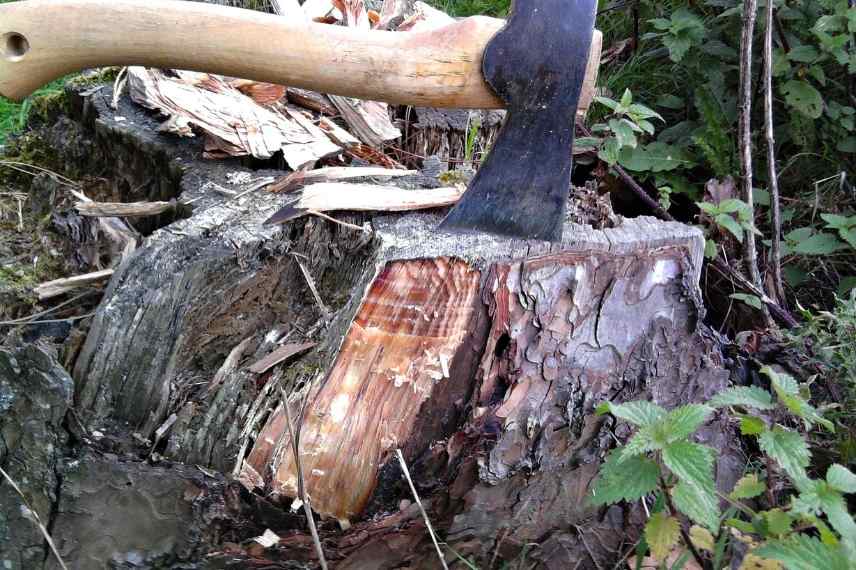
Chemical stump removal
Before using a chemical product, bear in mind that it will remain in your soil for many years.
- Sodium chlorate, highly toxic, is not recommended in a natural garden or where children play.
- Burning: extremely dangerous and polluting method. It involves pouring petrol or a flammable product into notches in the stump. It’s an outdated way of doing things and we strongly advise against it!
Among more natural solutions, consider the following methods:
- When it begins to grow, garlic emits a toxic substance that will greatly harm the tree. At the end of August, use a large drill bit to bore vertical holes 20 cm deep, wide enough to insert a clove of garlic. Drill these galleries every 10 cm in all directions across entire surface of the stump. Don’t hesitate to do the same with large exposed roots! You can then seal the holes with clay to finish.
Note: drilling simple holes without adding anything is also a method to allow fungi to attack the stump and eventually devitalise it!
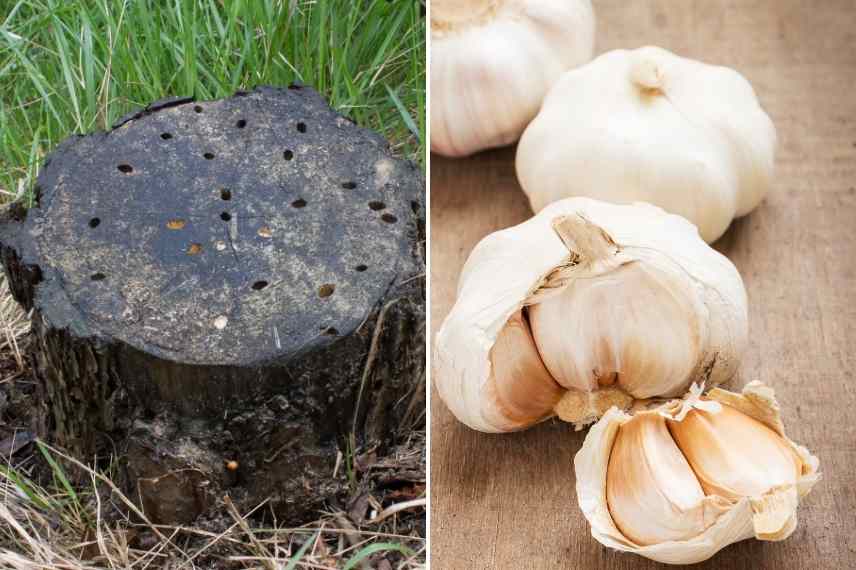
A stump, holes, garlic…
- Tarpaulin method: place a tarpaulin (opaque to light) over the stump to make it rot. Stagnant moisture and lack of sunlight will, in time, rot the stump. Drawback: process is slow and can take up to two years.
- Rock salt: same process as for garlic… however do not overdo the quantity because use of salt is not an ecological solution as it greatly disrupts soil life and few plants tolerate salt.
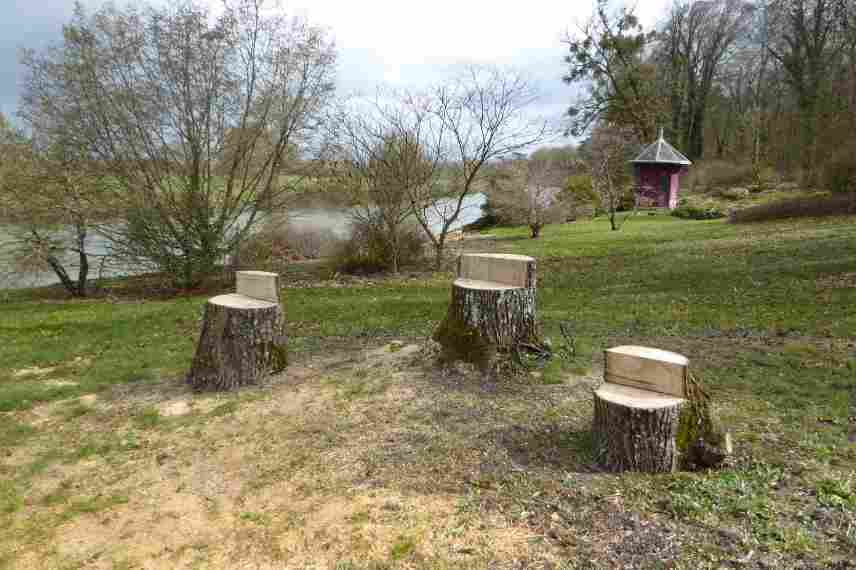
You can also simply leave tree trunks in place… to convert them into layers! (here at Château du Lude in France – Photo: Gwenaëlle Authier David)
Is it really necessary to remove the stump?
If you decide to keep the stump, some problems can quickly arise. Tree species such as willows, poplars, false acacias and other hazels are capable of producing suckers and forming new shoots for years despite complete disappearance of the tree’s aerial parts. In that case, chemical devitalisation of the stump using various substances and techniques will be necessary.
The number of animal and plant species whose life cycle depends on dead wood is simply enormous. Most threatened insects, or unfortunately extinct ones in Europe, are xylophagous insects (which feed on wood) that need this resource to complete their life cycle.
Stumps also provide shelter for many species of small mammals, amphibians, ground beetles, a larder for insectivorous birds, a substrate for a myriad of fungi, not to mention the plants themselves that will use this support to grow.
As you will have understood, that apparently sterile stump you considered a nuisance in your garden actually turns out to be a true oasis of life for dozens of species.
After several years, the stump will give a very attractive appearance in gardens with a naturalistic or rustic theme.
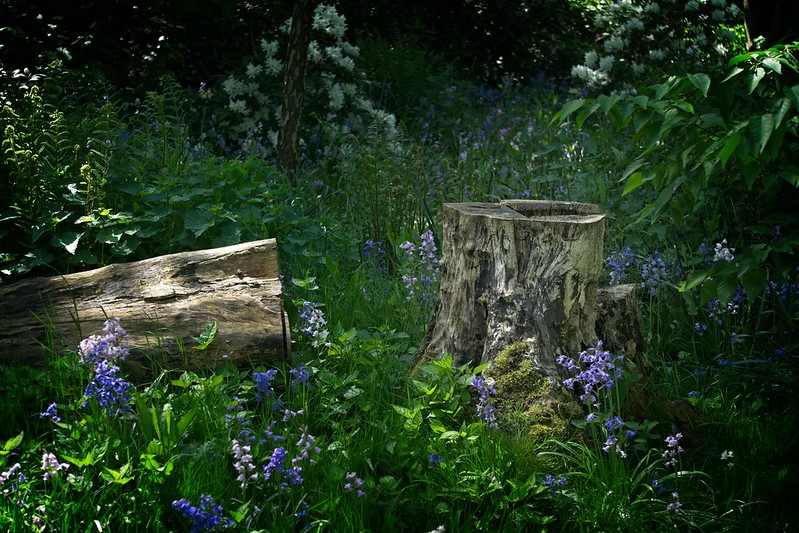
A stump left in a wild area of the garden is very ornamental (Photo : Garry Night)
Mosses, ferns, ivies and other lichens will cover your old tree stump, creating a composition very pleasing to the eye throughout the seasons.
Another positive point: the roots and wood decomposing in the soil enrich it with organic matter, which is very beneficial for fertility!
So take time to think before intervening; nature will thank you with its beauty and spontaneity.
Some people sometimes fear catching their feet and tripping over the stump. It’s an issue that’s not very difficult to solve: place a flower pot, a wrought-iron sculpture or any other accessory that will serve as a marker to avoid this inconvenience.

How to transform your stump in the garden!
- Subscribe!
- Contents
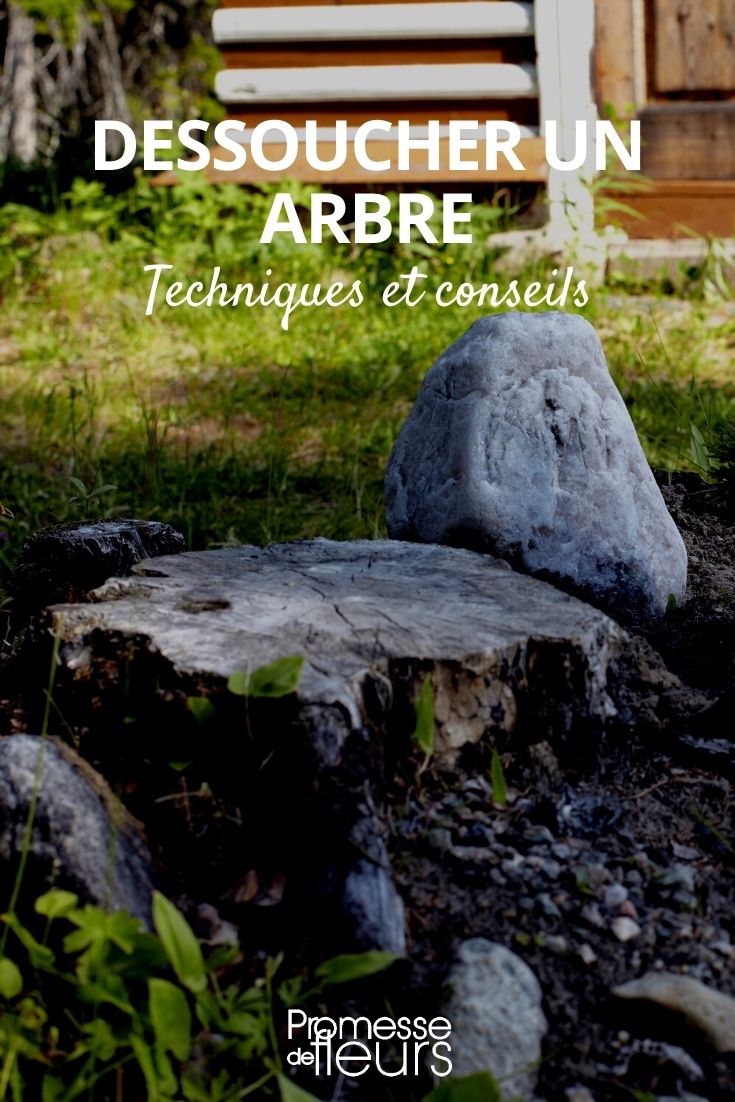































Comments